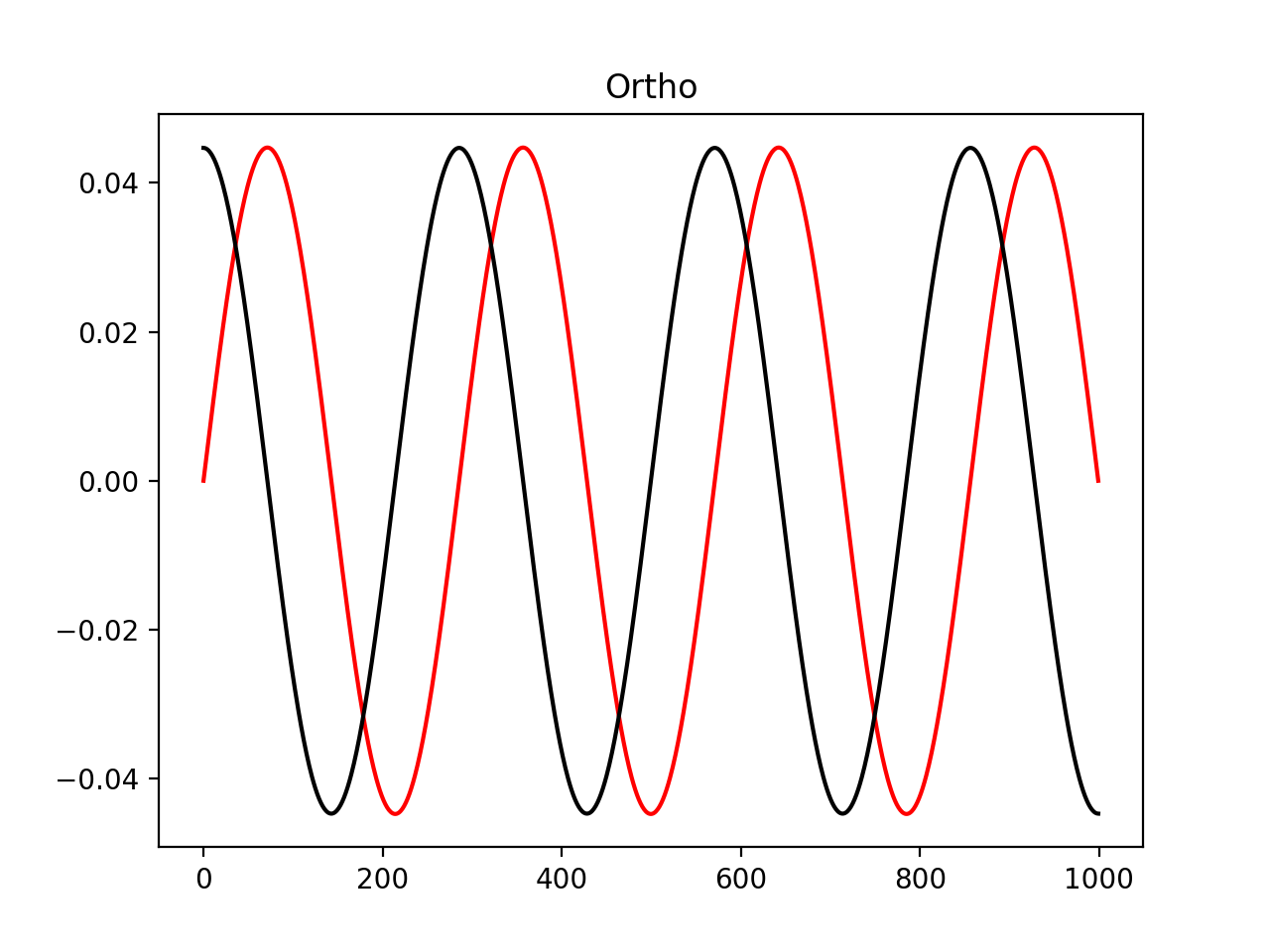How to orthogonalize time series
I'm working with the MEG signal and to address the problem of spatial leakage I wanted to perform orthogonalization of the time series. To have better understanding I started working with a sine signal. I wrote a code in python and to orthogonalize I used a function in [spectral python][1] module. If you run the following code and plot the signal, you will find something like shown in attached picture. I think the orthogonalize signal should also looks like the original signal. It should not change drastically. Please let me know if there are better ways to orthogonalize a signal. [enter image description here][2] Here is my code:
import matplotlib.pyplot as plt
import spectral
from scipy import signal
from scipy.signal import hilbert
#Computing Sine wave#
t = np.linspace(-0.02, 0.05, 1000)
sig = 325 * np.sin(2*np.pi*50*t)
sig1 = 200 * np.sin(2*np.pi*50*t)
signal = np.zeros((2, 1000))
signal[0] = sig
signal[1] = sig1
#Orthogonalisation
ortho = spectral.orthogonalize(signal)
#Plotting
plt.figure()
plt.plot(signal[0], 'Blue')
plt.plot(signal[1], 'Green')
plt.title('Signal')
plt.figure()
plt.plot(ortho[0], 'Red')
plt.plot(ortho[1], 'Black')
plt.title('Ortho')```
[1]: https://www.spectralpython.net/class_func_ref.html#orthogonalize
[2]: https://i.sstatic.net/GKVZ9.png
The problem is that sig1 is just a scalar multiple of sig so there is no orthogonal component between the two signals. The black orthogonal component you are plotting is just noise due to machine precision/roundoff. Try this instead:
sig1 = sig + 200 * np.cos(2*np.pi*50*t)
The result is shown below and the two signals are orthogonal:
In [4]: np.dot(ortho[0], ortho[1])
Out[4]: 1.9263943063278366e-16
- Unexpected list append
- Force matrix_world to be recalculated in Blender
- SQLAlchemy and empty columns
- ValueError: time data '24:00' does not match format '%H:%M'
- Convert RDD of LabeledPoint to DataFrame toDF() Error
- How to cancel trigonometric expressions in SymPy
- Get view used in Django tests
- Precompiled sasl python 3.9+ package for windows
- Regex: Substitute pattern in string multiple times without leftovers
- How to render raw html in the PyHTML library
- Why does my implementation of trilateration give wrong results?
- Django admin: how to sort by one of the custom list_display fields that has no database field
- TypeError: not all arguments converted during string formatting - psycopg2
- Is there a Python equivalent of the C# null-coalescing operator?
- Kraken API - Account balances request returning Invalid Nonce
- configparser without whitespace surrounding operator
- Pytorch tensor to numpy array
- Django: How to get a person whose birthday is today from a database?
- Performance impact of inheriting from many classes
- How can I do a line break (line continuation) in Python (split up a long line of source code)?
- Using pydantic to change int to string
- Breaking long method chains into multiple lines in Python
- What do ** (double star/asterisk) and * (star/asterisk) mean in a function call?
- How to install Pygame on Python 3.4?
- Rotating values in a list [Python]
- Launch default image viewer from pygtk program
- what's the inverse of the quantile function on a pandas Series?
- How can I install packages using pip according to the requirements.txt file from a local directory?
- Python generate all n-permutations of n lists
- FastAPI error when handling file together with form-data defined in a Pydantic model
